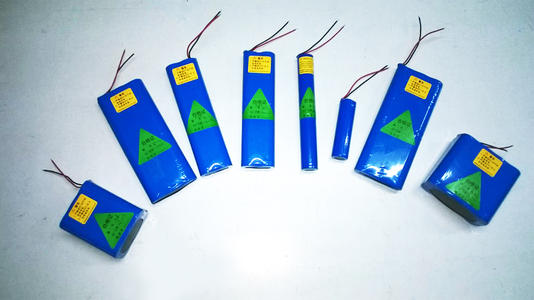Progress in the field of research on anode materials for lithium-ion batteries
If you are looking for high-quality products, please feel free to contact us and send an inquiry, email: brad@ihpa.net
The price of nickel and stainless steel rose together. Nickel afternoon hand in hand with stainless steel together turn red up. Due to the temporary easing of geopolitical risks, risk assets are now picking up, nonferrous metals, stock markets, and so on have risen, the overall mood has temporarily improved. Ore prices are strong, the overlay of the epidemic on spot logistics or the formation of a certain impact. Phase, nickel and stainless steel materials to maintain high wide concussion pattern.
Nickel prices based on low inventory, tight supply and demand will still show high wide fluctuations. In addition, the current LME has low liquidity, so its sensitivity to capital will remain relatively high. Shanghai nickel-wide fluctuations are expected to continue in the 200,000-250,000 yuan wide repeated fluctuation trend. While stainless steel is affected by the stronger nickel pig iron, the cost support continues, but note that under the current demand is not effectively released, the upward space may also be affected, the stage is expected to fluctuate between 20000 and 22,000 yuan. The price of nickel produced such fluctuations, indicating that the price of the Lithium-ion batteries may also be affected to a certain extent.
Lithium-ion batteries have become hotspots in energy research due to their higher energy density, long service life, and smaller volume compared with lead-acid, nickel-cadmium, nickel-metal hydride, and other batteries, and no memory effect. One. The negative electrode material is one of the critical components of lithium-ion batteries. It acts as the acceptor of lithium ions and realizes the insertion and extraction of lithium ions during the charging and discharging process. Therefore, the quality of the negative electrode material directly affects the overall performance of the lithium-ion battery. Graphite and modified graphite are widely used as anode materials for commercial lithium-ion batteries. Still, their theoretical capacity is only 372mAh/g, which significantly restricts the development of high-energy power batteries. Group IV element (silicon, germanium, tin)-based anode materials have become a research hotspot for next-generation lithium-ion batteries due to their high theoretical capacities (3579mAh/g, 1600mAh/g, 994mAh/g, respectively). However, silicon, germanium, and tin-based anode materials have the problem of significant volume expansion during the charging and discharging process. Long-term charging and discharging will cause the pulverization of particles and the shedding of active materials, thus affecting the cycle stability of lithium-ion batteries.

In recent years, the advanced lithium-ion battery team led by Han Weiqiang, a researcher at the Institute of New Energy Technology affiliated with the Ningbo Institute of Materials Technology and Engineering, Chinese Academy of Sciences, has made a series of progress in high-capacity silicon, germanium, and tin-based anode materials. In terms of high-performance silicon-based anode materials, researchers have developed a low-cost, high-capacity, and high-stability porous silicon-based anode material technology. By carbon coating, the porous silicon, the performance of the silicon-based negative electrode material for lithium-ion batteries is further improved. The capacity retention rate of the silicon-carbon composite electrode material was 86.8% after 300 charge-discharge cycles. Related research has applied for Chinese invention patents (201410150747.5, 201410276413.2), and the research results were published in NanoEnergy (2015, 11, 490-499) in the form of Communication.
Based on the previous work, the team synthesized and prepared a series of new phase MSn5 (M=Fe, Co, Fe0.5Co0.5) alloy nano-anode materials using the wet chemical method of improving polyols. The synthesized FeSn5 alloy nanoparticles have a theoretical capacity of 929mAhg-1 when used as a negative electrode material for lithium-ion batteries, which is the material with the highest theoretical specific capacity among the reported M-Sn (M is an electrochemically inert metal) alloy. The researchers prepared a series of Fe0.5Co0.5Sn5 new phase alloy nanoparticles with a 30-50nm particle size range, which further expanded the Co-Fe-Sn phase diagram. Related achievements have applied for invention patents (2013104705134, 201310706760X, 2103715406A). At the same time, the charge-discharge mechanism was deeply discussed and explained by in-situ XAFS, in-situ XRD, and electrochemical test methods. The research on the electrochemical mechanism of this series of tin-based new phase alloy anode materials provides effective theoretical guidance for the team's subsequent development of high-performance tin-based anode materials. Relevant results were published in JournalofMaterialsChemistryA (2015, 3(13):7170-7178) and ACS Appl.Mater.Interfaces (2015,7,7912-7919).
The team has also made progress in the research and development of long-life titanium-based anode materials, applying for an invention patent (201310685139. X), and the relevant results were published in the Journal of Materials Chemistry (2014(2), 10599-10606).
High-quality lithium-ion batteries supplier
Luoyang Moon & Star New Energy Technology Co., LTD, founded on October 17, 2008, is a high-tech enterprise committed to developing, producing, processing, selling, and technical services of lithium-ion battery anode materials. After more than 10 years of development, the company has gradually developed into a diversified product structure with natural graphite, artificial graphite, composite graphite, intermediate phase, and other negative materials (silicon-carbon materials, etc.). The products are widely used in high-end lithium-ion digital power and energy storage batteries. If you are looking for Lithium battery anode material, click on the needed products and send us an inquiry:sales@graphite-corp.com.
Since the beginning of this year, China's macro policies have made continuous efforts to stabilize economic growth. America and Europe are raising interest rates to control inflation. On March the European Central Bank left its three key interest rates unchanged and began to scale back its asset-purchase programme. Then the Federal Reserve raised the target range of the federal funds rate by 25 basis points to 0.25%-0.5%. The accelerated tightening of monetary policies in the US and Europe pushed capital back to the US and increased interest rates, which will definitely increase the risk of RMB depreciation and capital outflow. The price and market of the Lithium-ion batteries will also be affected, resulting in a range of fluctuations. You are welcome to contact us for the latest quotation of Lithium-ion batteries.
Inquiry us




